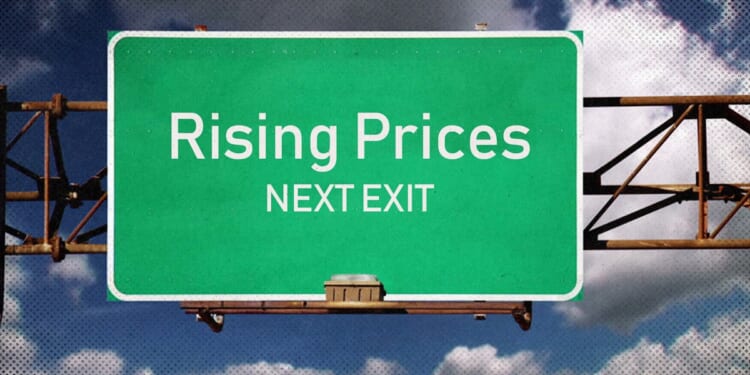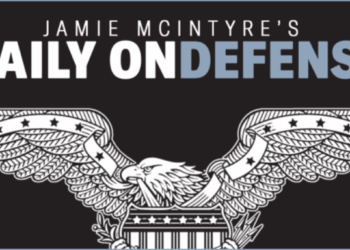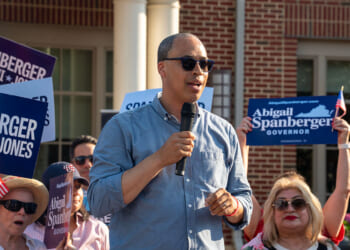In the modern political imagination, the subsidy is the government’s magic wand — a painless way to make life’s necessities affordable. Can’t pay tuition? Take a loan. Struggling with premiums? Get a tax credit. Priced out of housing? Here’s a guarantee. From Washington’s perspective, affordability is merely a problem of distribution: if prices are too high, just inject more money.
This current ObamaCare argument — one that proves what a disaster subsidized healthcare is and the lengths Democrats will go to hide the failure — has reminded me of something I like to call “Ralph Wiggum’s Law” (after Ralph Wiggum of “The Simpsons” fame). Ralph claims to be “helping” when he is actually doing the opposite.
After half a century of subsidized “solutions,” the results are unmistakable. When the government subsidizes demand without expanding supply or enforcing efficiency, it inflates costs, distorts incentives, and entrenches the very inequities it claims to solve. Subsidized programs illustrate a common economic pattern known as “Bennett’s Law” or subsidy capture, in which benefits accrue more to suppliers (e.g., colleges, hospitals, builders, farmers) than to end users.
Consider higher education, the showcase of good intentions gone wrong. Once a middle-class rite of passage, college has become a debt trap. As federal student loans and grants expanded, universities discovered they could raise tuition year after year with impunity. The guaranteed flow of taxpayer-backed money severed the link between price and value. Administrations swelled, campuses sprawled, and entire bureaucracies were built around “student services” and “diversity initiatives,” while instruction quality stagnated. The average student now graduates burdened by tens of thousands in debt — a direct byproduct of policies meant to make college “accessible.” The subsidies didn’t make education cheaper; they made universities richer.
Healthcare tells the same story on a grander scale. Medicare, Medicaid, and the Affordable Care Act were (supposedly) designed to expand coverage and lower costs. Instead, they turned the sector into a fiscal black hole. Once providers were guaranteed payment — whether from insurers or government programs — the natural price discipline of the market vanished. Patients insulated from real costs consumed more; hospitals and drug companies charged more. The ACA’s subsidies did succeed in expanding insurance rolls, but premiums and deductibles still climbed, and overall healthcare spending ballooned. Subsidies increased demand, but supply, constrained by regulation, licensing, and consolidation, failed to keep pace. The inevitable result: higher prices and fewer choices.
Housing policy offers another lesson in unintended inflation. Federal mortgage guarantees through Fannie Mae and Freddie Mac were supposed to democratize homeownership. Instead, easy credit inflated housing prices, particularly in urban areas where new construction is heavily regulated. By subsidizing demand rather than building supply, policymakers fueled the housing bubble that imploded in 2008. Today’s “affordable housing” programs operate on the same premise — pouring subsidies into markets where zoning and regulation make affordability impossible. The result: more money chasing too few homes, and prices that climb still higher.
The pattern repeats across sectors. Agricultural subsidies enrich agribusiness and inflate land values. Energy subsidies, particularly for renewables, drive speculative bubbles and misallocation of capital. Public transit projects funded by federal largesse routinely exceed budgets by billions because there is no penalty for inefficiency. California’s high-speed rail, now a $100 billion vanity project, is the exemplar. Wherever subsidies flow, costs follow.
This isn’t mere economic theory. It’s a systemic failure of incentives. In a functioning market, consumers discipline producers: if the price is too high, they walk away. Subsidies destroy that feedback loop. When the government guarantees payment, consumers stop caring about cost, providers stop competing on value, and bureaucrats step in to “regulate” the consequences — usually by spending more. In practice, the subsidy becomes a transfer from the taxpayer to the supplier.
Defenders of these programs argue that without subsidies, many people would be priced out of essential goods. The reality is the opposite: subsidies make those goods unaffordable in the first place. The more the government intervenes to “help,” the more distorted and expensive the system becomes. Affordability cannot be engineered from the top down; it emerges from competition, transparency, and restraint — virtues that subsidies systematically destroy.
If policymakers truly wish to make education, healthcare, and housing affordable, they should stop subsidizing the symptoms of inflated costs and start addressing their causes. Expand supply. Remove regulatory barriers. Let markets reintroduce accountability. Until then, the high price of government help will keep rising — paid, as always, by the very people it was meant to save.
















